A City of London walking tour: 10 centuries in one day
The City of London offers an extraordinary contrast to the visitor: it's simultaneously the oldest, most historic part of the city, while also being its newest and shiniest. Carla Passino is your guide for a walk around the famous sites and hidden gems.

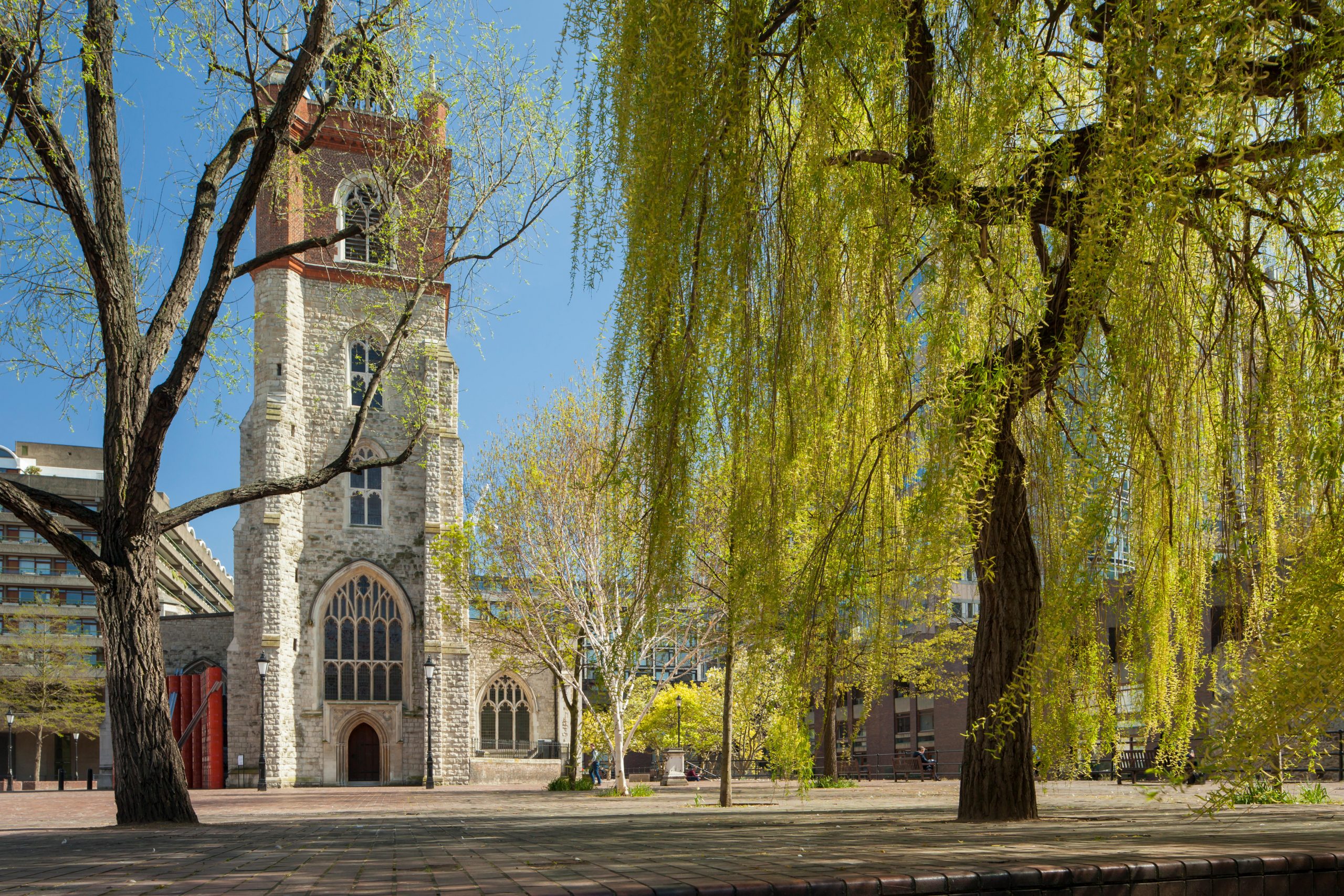
Emperor Trajan, a man well used to hero worship, would have been put out at the tribute that modern Londinium pays him. Dwarfed by the remains of the Roman wall behind it, his bronze — an early 20th-century replica of a 1st-century marble — is not only modest, but also a Frankenstein mix in which the head doesn’t match the body.
It only takes crossing a ruins-peppered subway to travel ahead 800 years to Norman times and a much mightier emblem of royal power: the Tower of London. ‘William the Conqueror,’ explains joint chief curator Tracy Borman, ‘wanted to subdue the “evil inhabitants” of London by creating a symbol of Norman domination over the native Saxons. I think he did a pretty good job of it.’
Over the centuries, the Tower became the backdrop to ‘terror, torture and bloody executions’ and enduring mysteries, including the 15th-century disappearance of Edward IV’s sons and the equally bewildering, but far less tragic case of Col Blood, the man who tried to steal the Crown Jewels. ‘Instead of being punished, he was pardoned by Charles II and given a generous pension,’ says Dr Borman. ‘This has led to speculation that he was a government spy or that he held a secret that Charles was anxious to keep hidden.’
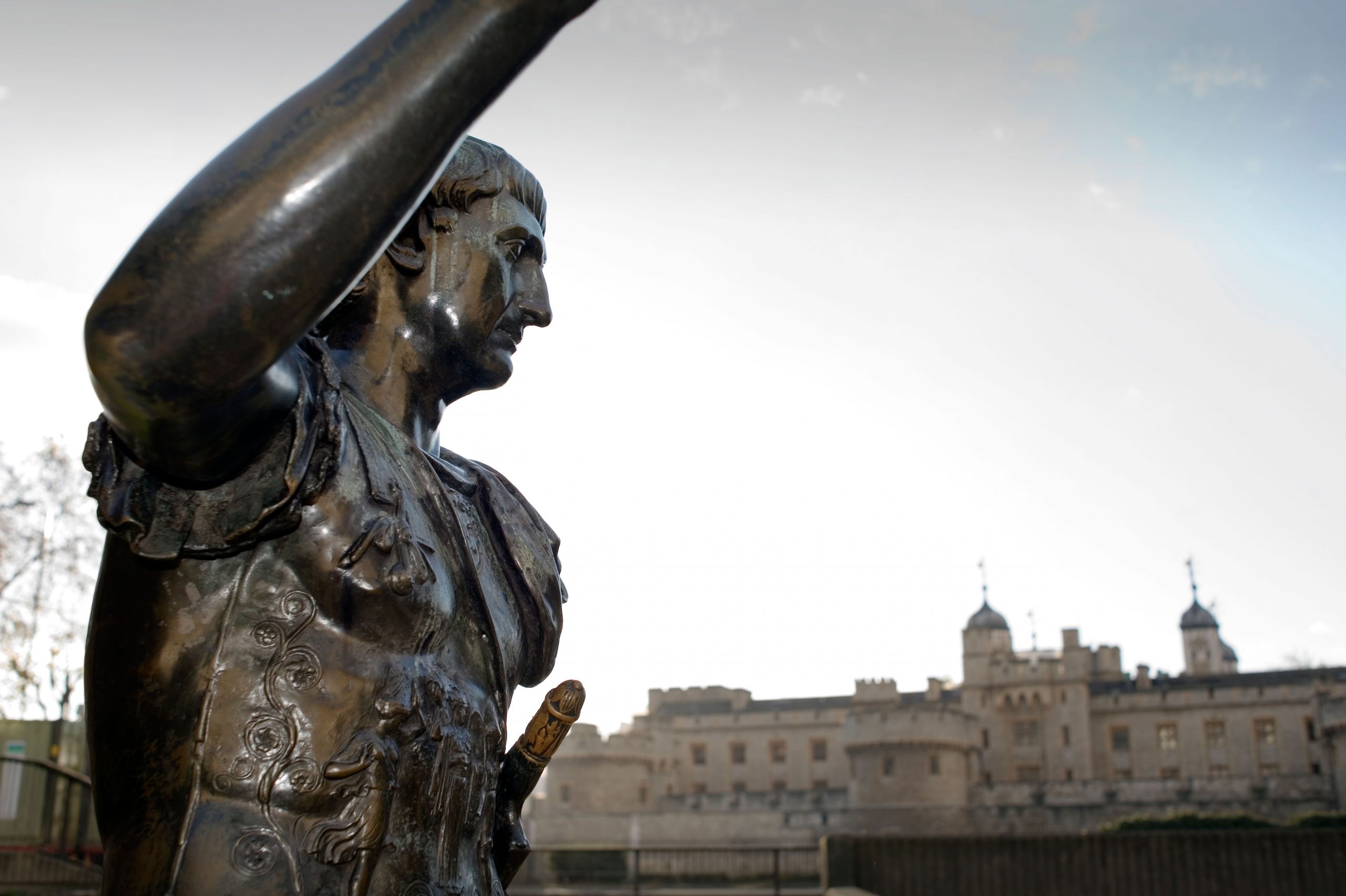
But the Tower has also been the setting for many Jubilee celebrations — beginning with Edward III’s in 1376, when it was the starting point for a procession that culminated with a weeklong joust at Smithfield. Having marked the 70th anniversary of The Queen’s accession to the throne with a 62- gun salute, it is now getting ready to pay her a floral homage: ‘Open from June 1 until September 18, Superbloom will see more than 20 million seeds fill the moat with a spectacular field of flowers.’
Roman Britain re-emerges from the bowels of the City at All Hallows by the Tower, in Byward Street, one of the few churches to survive the Great Fire unscathed. Age, luck and the foresight of some of its vicars have made All Hallows a treasure trove of intriguing artefacts, from a Roman pavement and a Holy Land altar to ancient parish registers that were stashed in a cistern at times of turmoil. But it’s the tiny crypt of St Clare that really captures the heart. Here, embedded on the south wall, is a piece of molten lead, a relic of the fire that almost destroyed the church during the Blitz.
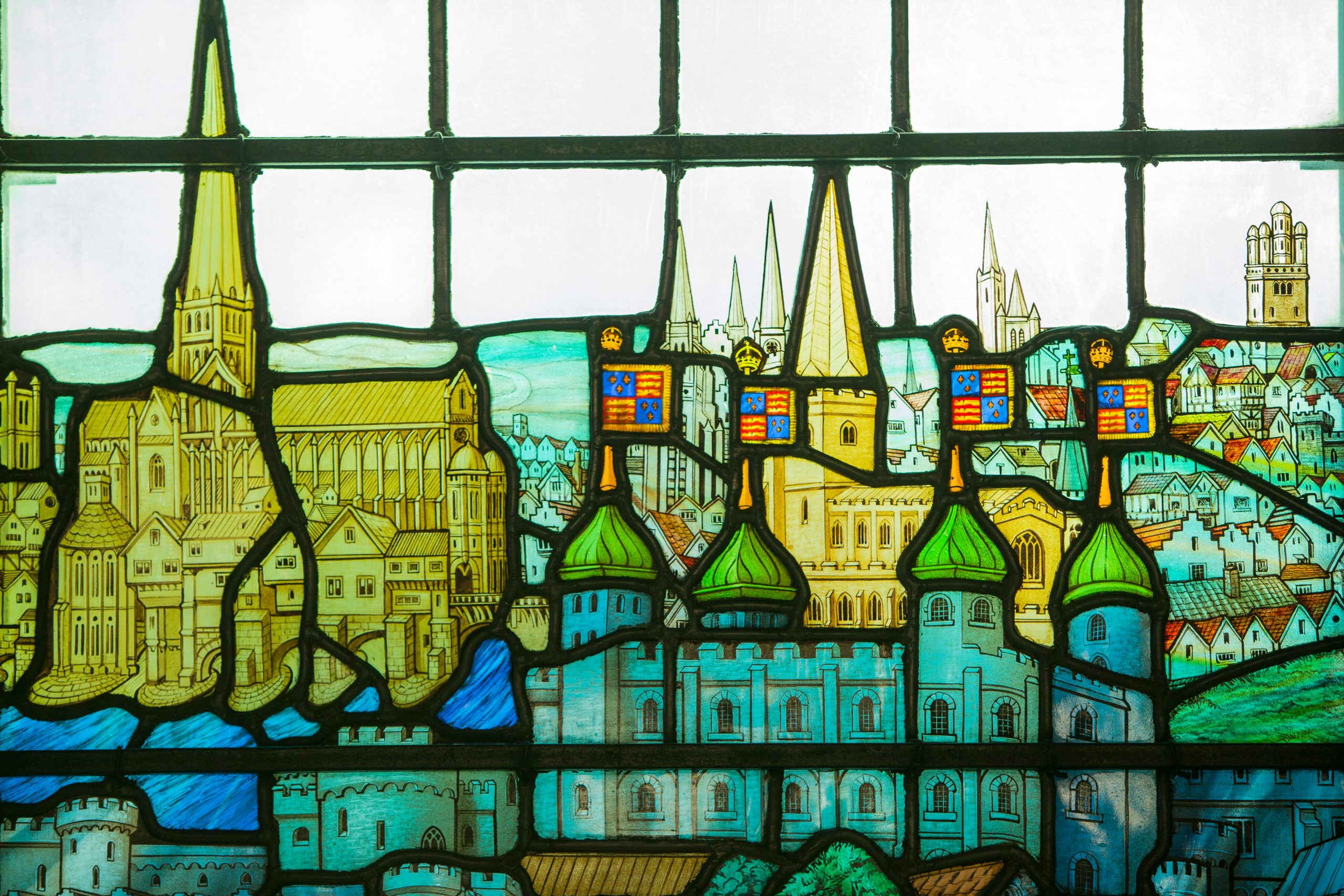
If All Hallows escaped the Great Fire only to endure German bombing, St Magnus-the-Martyr, in Lower Thames Street, suffered from both. The two churches are separated by the length of Eastcheap, where a boar curiously peeks from under the arches of the former Victorian warehouse at No 33 — a reference to Shakespeare’s Boar Head’s Tavern, which once stood here. Towering behind the building is the curious shape of Rafael Viñoly’s’ Walkie Talkie’, its hypertrophic head projecting over the slender body.
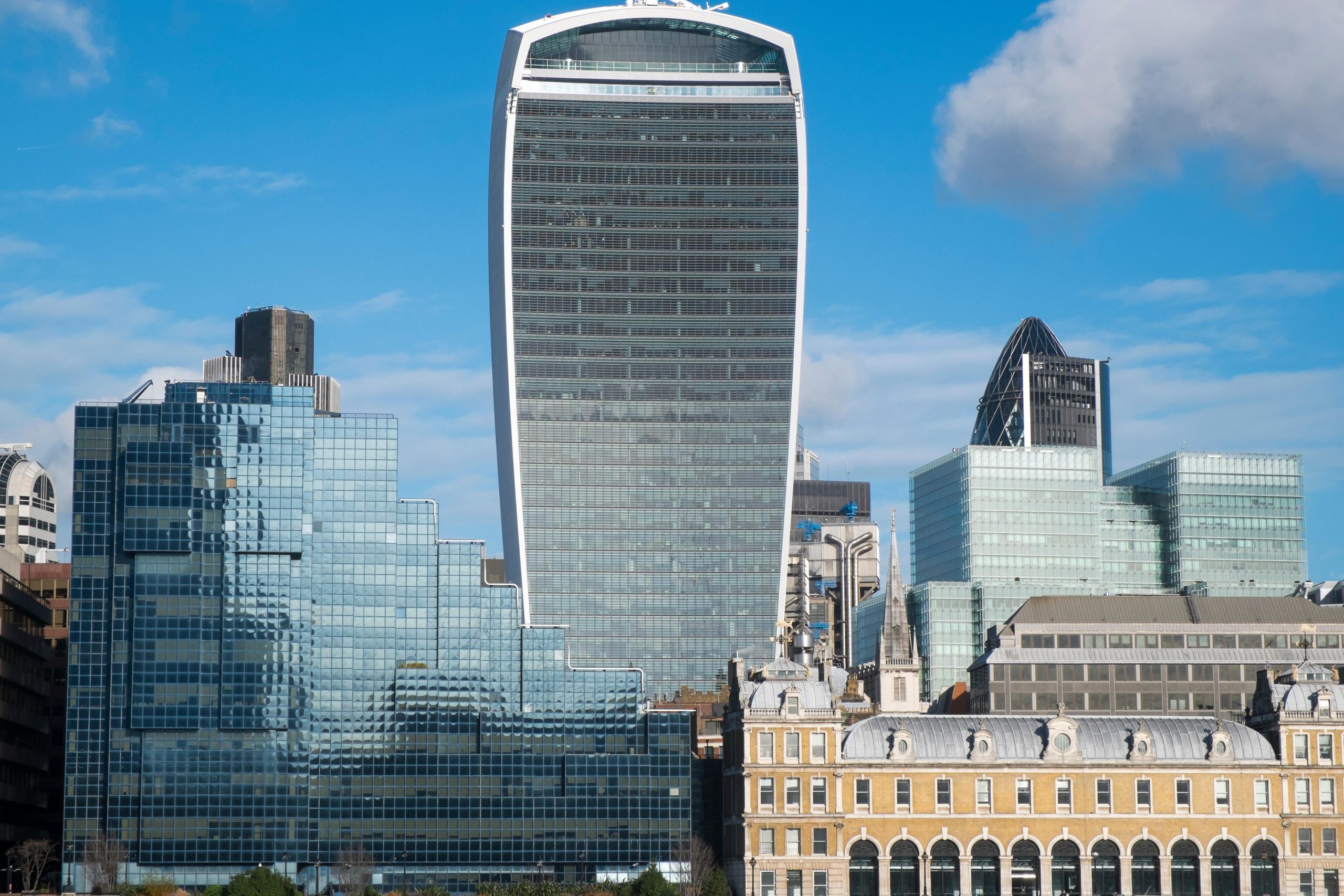
The skyscraper’s top three floors are home to the Sky Garden, thick with plants, but also bars and restaurants for refreshments seasoned with (literally) dizzying views of London. Closer to the ground, the Leadenhall market — once the Roman forum, now a Victorian masterpiece better known to the world as Harry Potter’s Diagon Alley — promises enticing, dairy-centric dishes at Cheese.
Exquisite houses, the beauty of Nature, and how to get the most from your life, straight to your inbox.
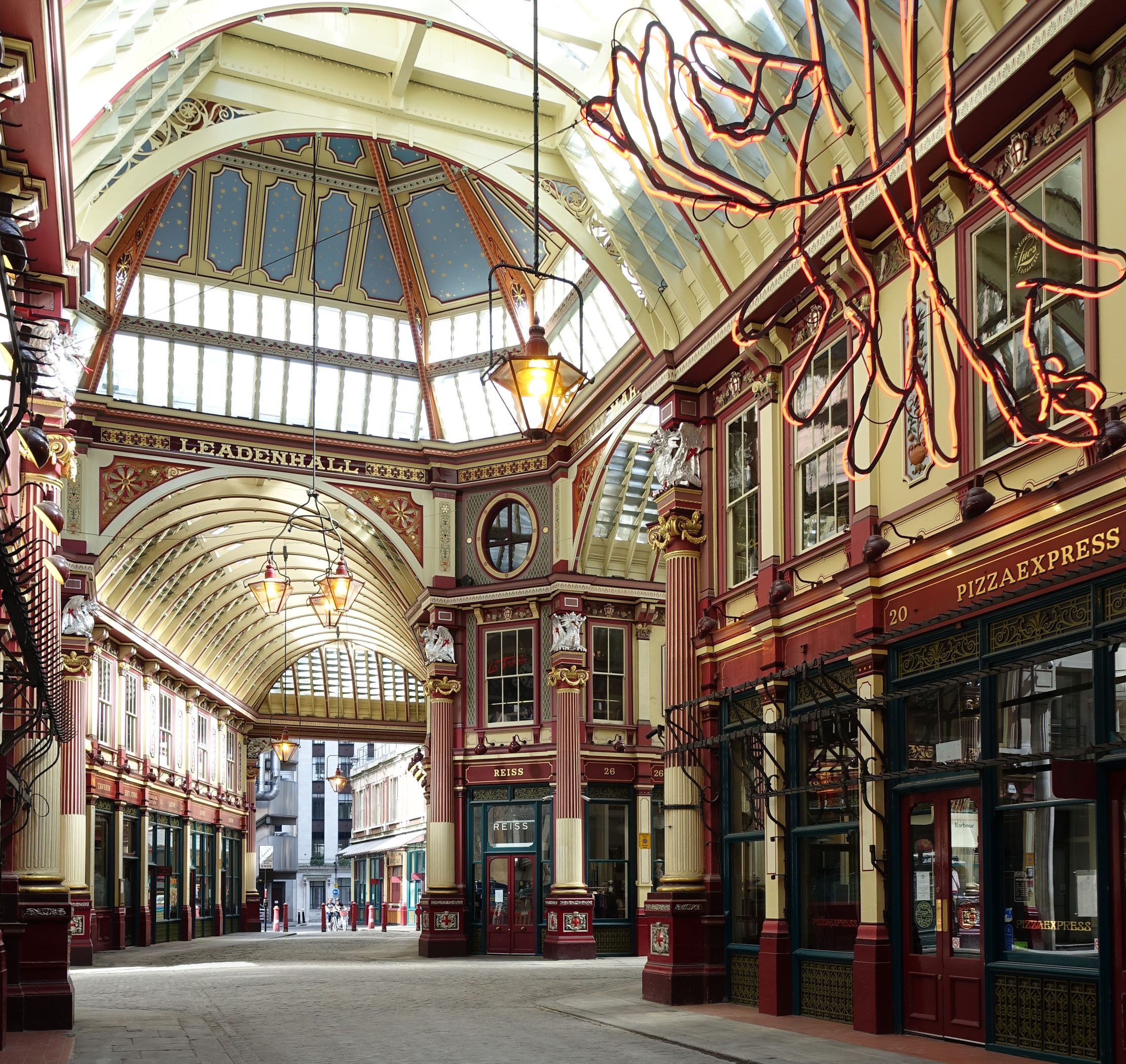
Straight south from Leadenhall, St Magnus — the head of the old London bridge from 1176 to 1831 — stands slender and white between the Thames and Pudding Lane. When a fateful spark caught on the flour at Thomas Farriner’s bakery on the night of September 2, 1666, it was the first City church to go up in smoke. Now, an ancient fire engine takes pride of place in the heavily panelled narthex, a relic of the 1704 rule that every parish should have fire-fighting equipment.
But it’s St Magnus’s interior, rather than its fate, that captured T. S. Eliot’s imagination in The Waste Land: its ‘Inexplicable splendour of Ionian white and gold’ a stark contrast to the ‘oil and tar’ sweated by the river and the soulless crowd, that earlier in the poem, flowed ‘down King William Street/To where Saint Mary Woolnoth kept the hours’.
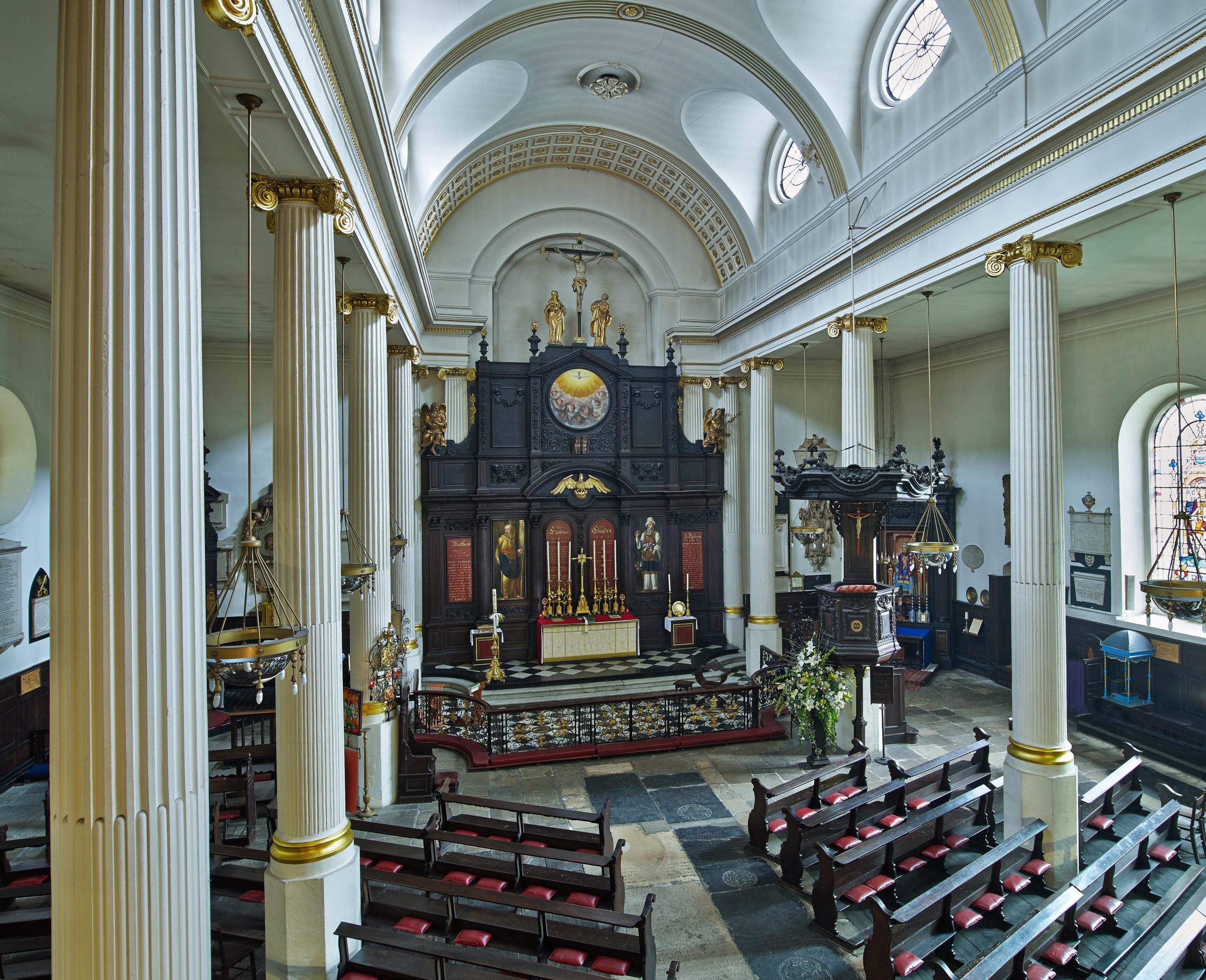
St Mary’s itself, which stands like an island parting Lombard Street from King William Street, is notable not only for Hawksmoor’s Baroque architecture, but also because it is a memento of the fight against slavery. One of its rectors was John Newton, author of Amazing Grace and a slave ship captain-turned-anti-slavery campaigner. He lived long enough to see the fruits of his efforts, with the Abolition of the Slave Trade Act coming into force in 1807, nine months before his death.
Only a few steps from St Mary’s, St Stephen Walbrook, the church where the Samaritans was founded, rises on the same site that, in Roman Londinium, would have been a temple to Mithras. Sandwiched between Mansion House, with its monumental proportions and Corinthian columns, and a curvy office building that seems inspired by the torso of the Michelin Man, it looks tiny and unassuming. Yet, ascend a few steps and any pretence of modesty vanishes into a circular marvel bathed in light, where a spare, round altar, sculpted by Henry Moore and surrounded by kneelers designed by Patrick Heron, sits under Wren’s masterpiece — an intricately decorated dome that was a model for St Paul’s.
None of Wren’s grace and restraint appear around the corner in Threadneedle Street, where the Bank of England rams grandeur down every passer-by’s throat. Sir Herbert Baker’s wedding cake of a building — which replaced Sir John Soane’s Palladian original — was intended to match the Bank’s exalted role. However, its cornucopia of columns and caryatids didn’t encounter much praise: Pevsner called it the greatest architectural crime in the 20th-century City of London.
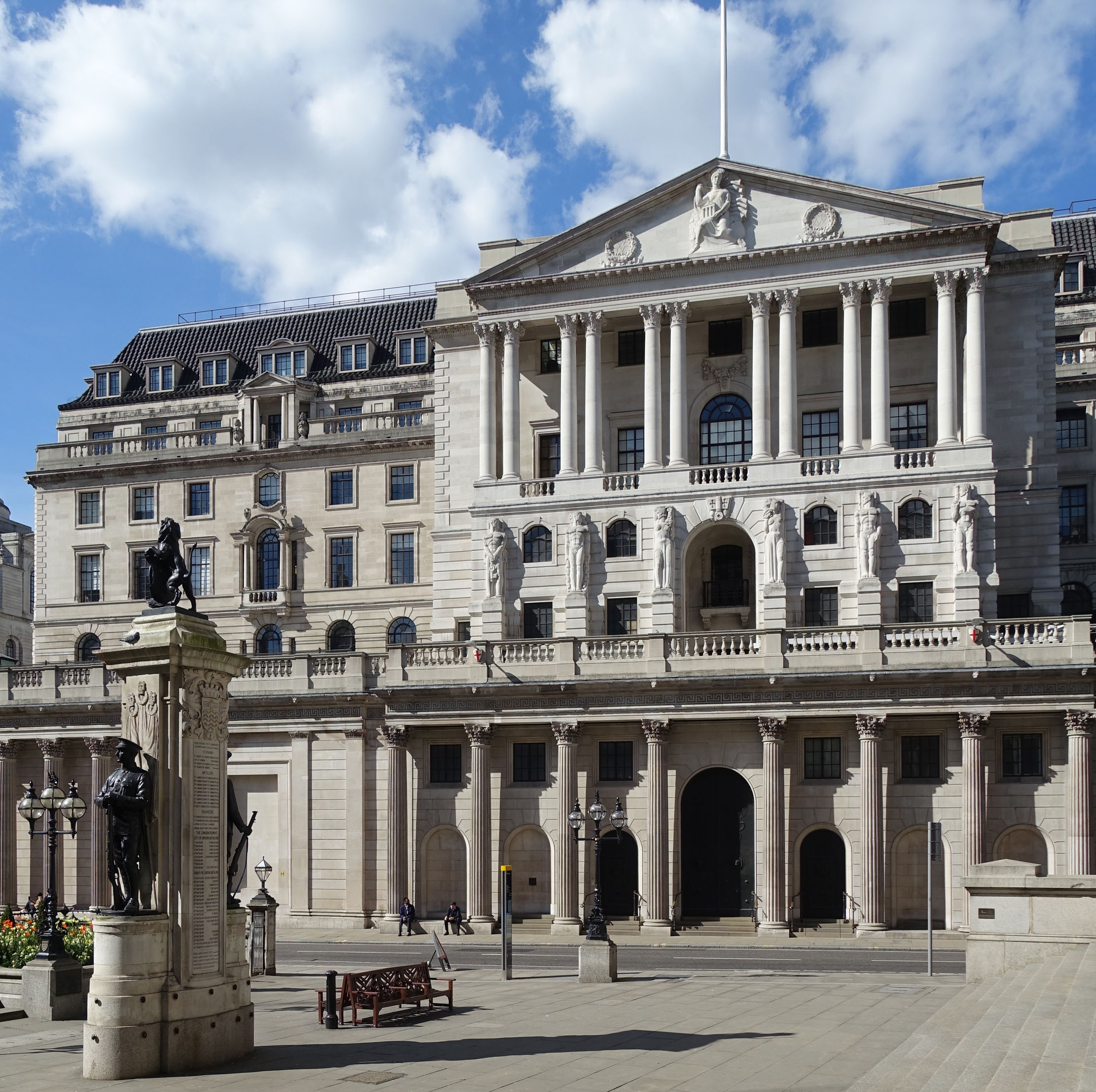
Perhaps, in designing the Bank, Baker suffered from a compulsion to outshine Sir William Tite’s The Royal Exchange, another building that drips pomp from every corner. But if the pediment sculptures of merchants fashioned in the style of Classical gods are an arresting pastiche for all the wrong reasons, the giant, gilded, grasshopper weathervane that tops the clock tower is endearing.
It’s a reminder that much of the City’s trade has its roots in the genius of 16th-century merchant Sir Thomas Gresham, whose crest was a golden grasshopper on a green mound. A visionary impressed by the Antwerp bourse, he funded the creation of a London exchange, to which he added two floors of shops, complete with an all-important alcohol licence.
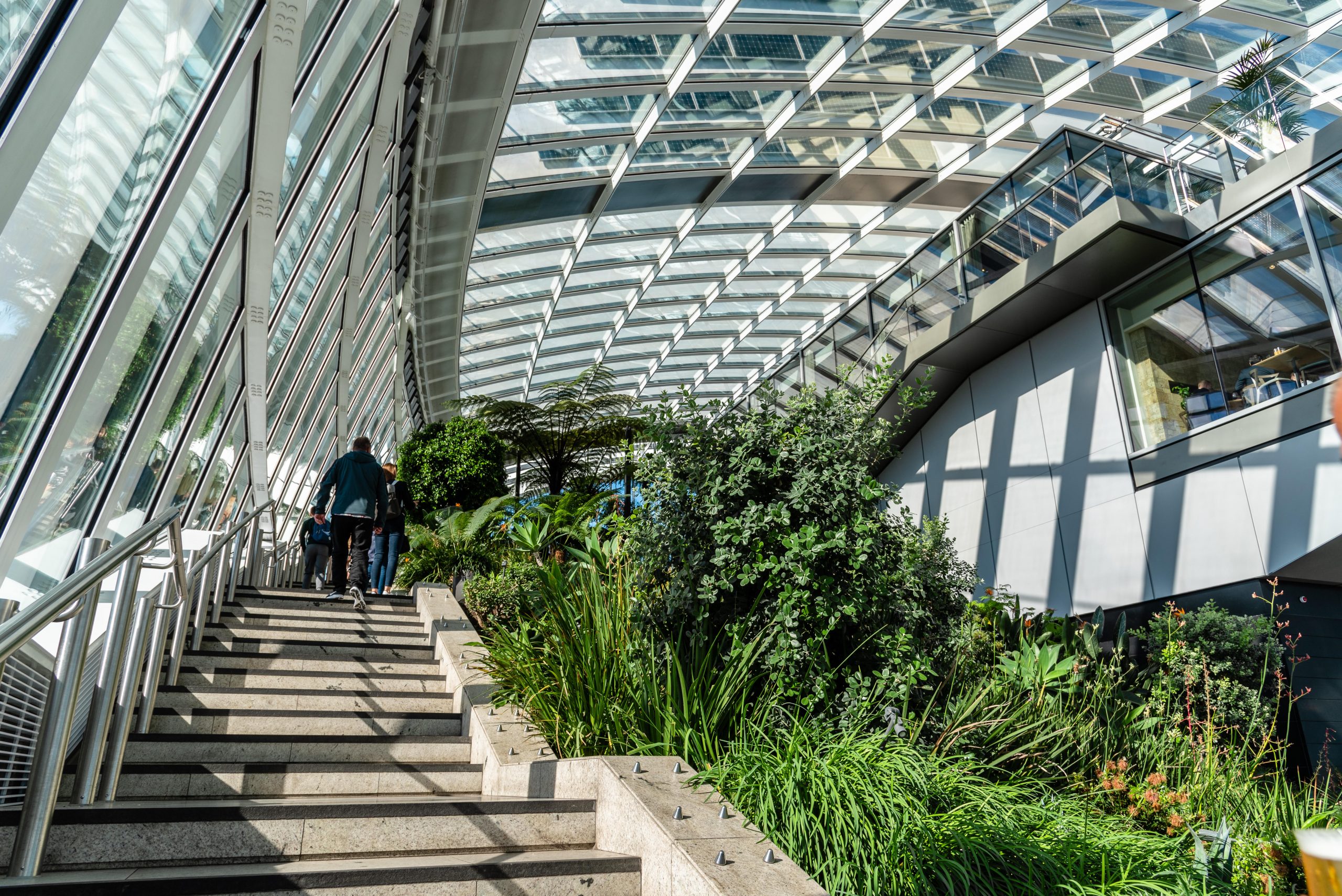
It’s this retail heritage that remains alive here: much of the interior courtyard, now topped by a glass roof, is taken up by Fortnum & Mason’s Art Deco-inspired bar, perfectly colour-coordinated with the Tiffany & Co boutique behind it, and by windows sparkling with gemstones (Boodles, as well as Tiffany), watches (Bremont, Watchfinder & Co) and silver (the sinuous shapes of Georg Jensen).
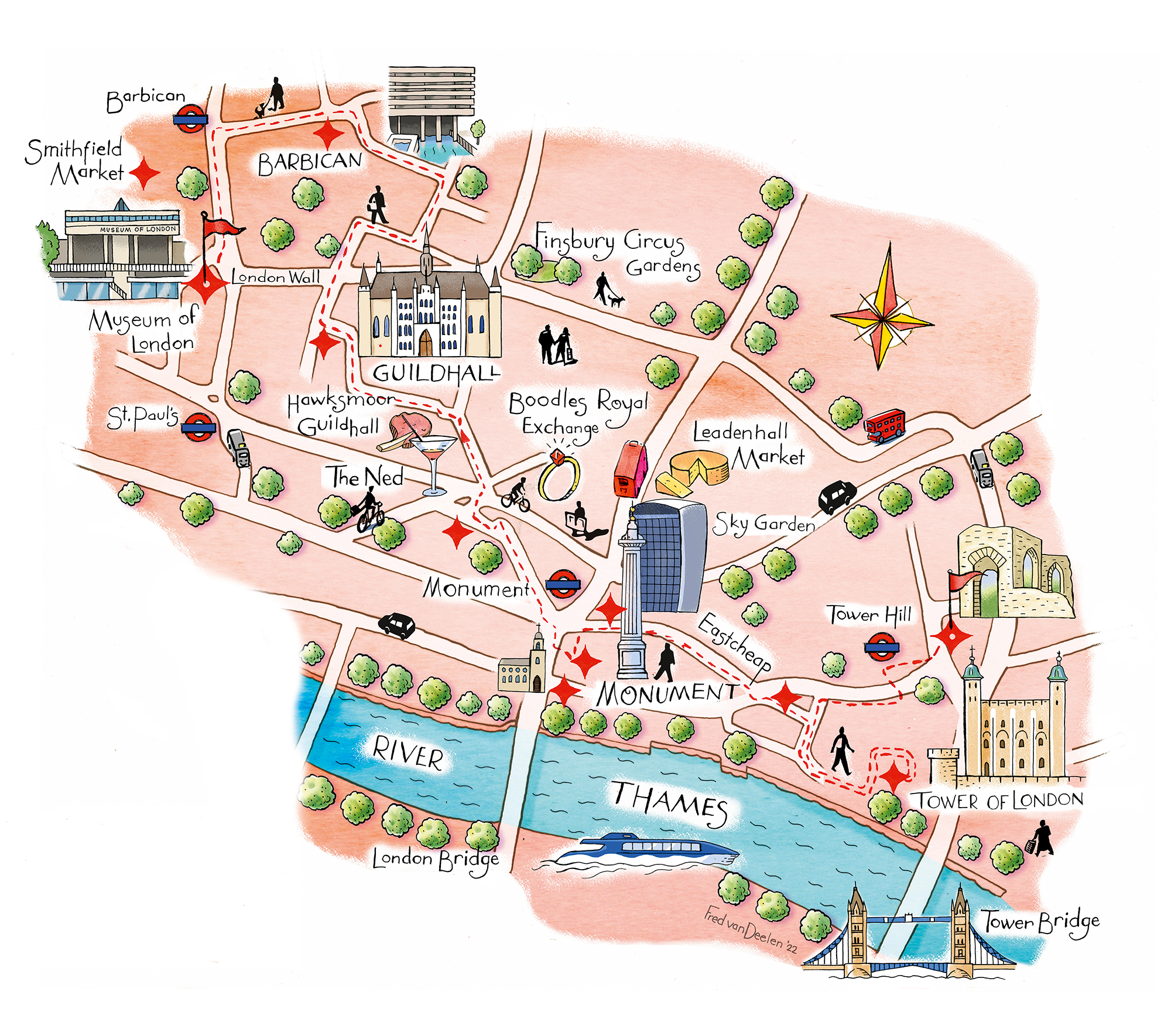
Even older than The Royal Exchange is another centre of the capital’s commercial power, Guildhall, in Basinghall Street, built in 1411 above cavernous crypts dating from 1042. It’s through it that London claims a venerable connection to ancient Troy. Story has it that it was none other than Brutus the Trojan, a descendant of Aeneas, who, having presided over the defeat of Welsh giant Gogmagog, went on to live in a palace built on the site. More modestly, but not less importantly, the area was home to a Roman amphitheatre, the ruins of which are visible from the Guildhall Art Gallery, which re-opens in April (Hawksmoor Guildhall is well placed almost opposite the gallery to provide meaty fortification).
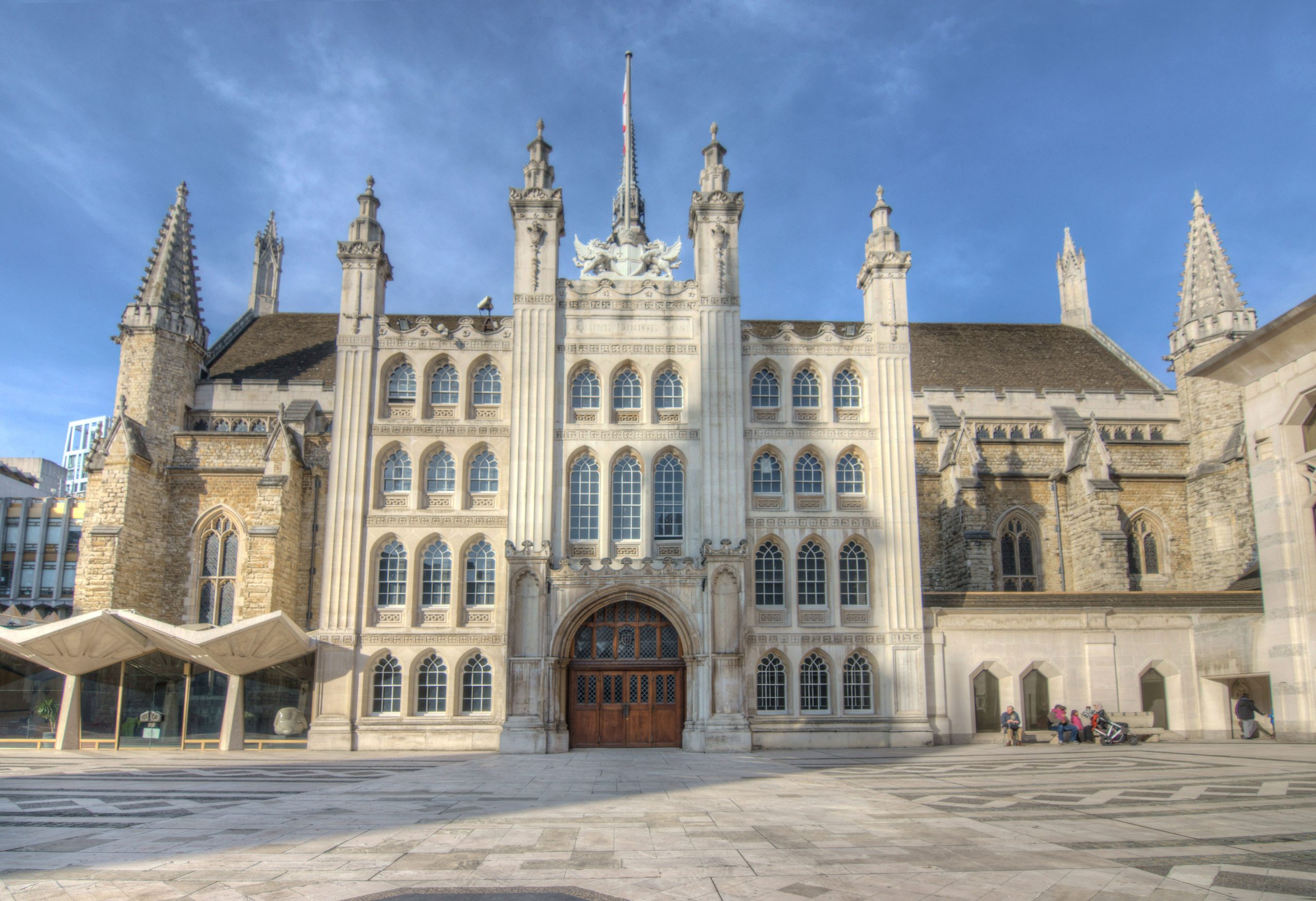
Remnants of London’s ancient past also crop up at the foot of the pedestrian network that links Guildhall to Cripplegate. Sneaking above the traffic, the high walks knit together Roman foundations and Saxon walls, the (medieval, albeit heavily restored) St Giles Cripplegate and today’s soaring glass-and-steel blocks, all sheltered in the Brutalist embrace of the Barbican, the hammered concrete walls of which, rising like a phoenix from the ashes of the Blitz, are a mighty foil for the glimmering waters of the central ponds. On a lucky day, a rapper may improvise a performance on a walkway up above a crumbling bastion — a poetic tribute that Trajan might have appreciated more than his lacklustre bronze.
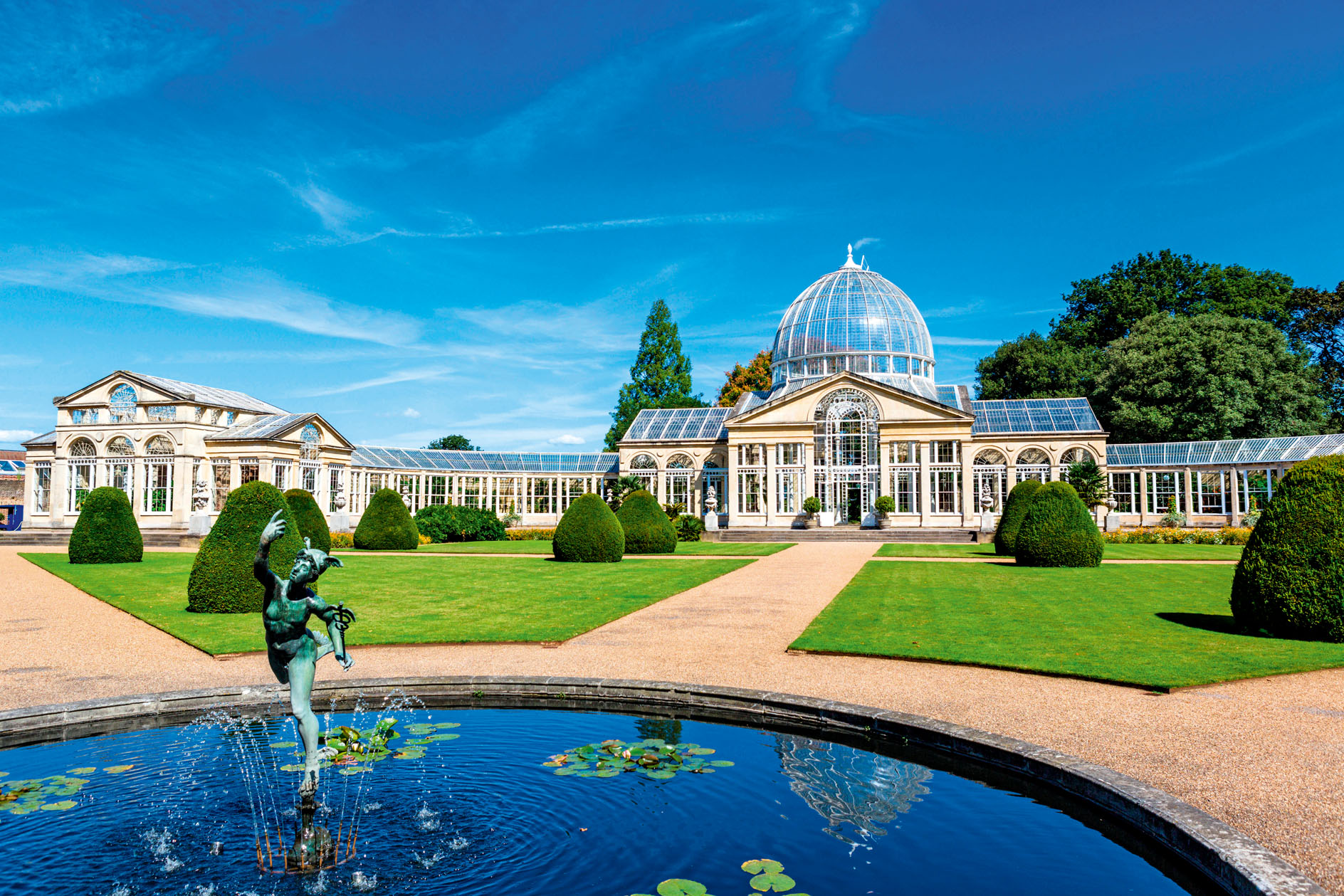
Best walks in London, from Kew Gardens and Eltham Palace to Lesnes Abbey and the 'Cathedral of Sewage’
Our capital city is more inviting for walkers than you might expect, with meadows, towpaths, unexpected sculpture and great houses
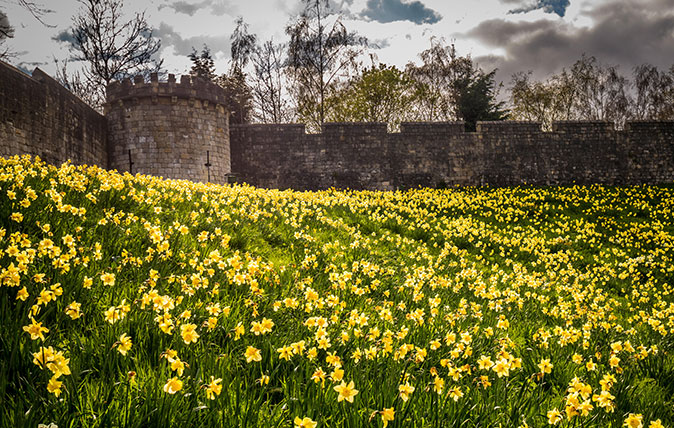
Credit: Alamy
A walk in York: Roman walls, battlements, turrets and the most glorious cathedral façade in Britain
Fiona Reynolds swapped the countryside for the city as she walked York's magnificent city walls.
Carla must be the only Italian that finds the English weather more congenial than her native country’s sunshine. An antique herself, she became Country Life’s Arts & Antiques editor in 2023 having previously covered, as a freelance journalist, heritage, conservation, history and property stories, for which she won a couple of awards. Her musical taste has never evolved past Puccini and she spends most of her time immersed in any century before the 20th.
